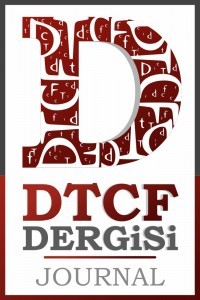Sözlü Edebiyat ve Gösteri Kültürünün Buluşma Noktası: “Meddah” Tek Kişilik Tiyatro
Sözlü edebiyat geleneği, İslam dünyasında tiyatronun tam anlamıyla gelişemediği ortamda bir telafi unsuru olarak gösteri kültüründe kendine uygun bir boşluk bulmuştur. Göçebe toplumunun yaşam tarzına uyum içinde, XI – XIX yüzyılları arasında hikaye anlatıcısından Türk geleneksel tek kişilik tiyatrosuna dönüşen meddah, Orta Asya şaman ve ozan geleneği ile Arap maddahları, Fars Şahname epik geleneğini içine alıp tiyatro ve drama unsurlarını benimseyerek, sözlü edebiyatı ve halk tiyatrosunu birleştiren bir sanat biçimi haline gelmiştir. Danişmendname, Battalname, Şahname gibi “kitap” anlamına gelen “namelerin” sözlü olarak yayılması sözselliği ve yazı kültür modelleri arasındaki karışık ilişkileri yansıtır. Doğu anlatım sanatından da esinlenen Avrupa’da “off tiyatrosun”a yeni yerleşmiş, storytelling olarak bilinen bir anlatım gösterisi kültürlerarası ve interdisipliner projelerde kendini kanıtlamış bir biçim olup oyuncu ve seyirci arasında eşitlik sağlayan bir tiyatro önerisidir.
Anahtar Kelimeler:
Meddahlık, Anlatıcı, Sözsellik, Hikaye, Destan, Tumar, Taklit, Klişe, Yazı ve Sözlü Kültür Modelleri, İçeriklerarası Anlam
Turkish One-Man Theatre Meddah: Oral Literature Meets the Performing Culture
In the Islamic world where theatre has not developed as an independent art form, it’s orality helped redress this imbalance finding room for itself among the performing arts. Turkish meddah has developed in accordance with the rules of nomadic life between the 11th and the 19th centuries from the storyteller to the one-man theatre. Absorbing the Central Asian shaman, singer of tales ozan, Arabic maddah and the epic tradition of Persian Shahname, it has also gradually assimilated theatre and drama elements. As an art form it combines orality with Turkish popular theatre. Books called “name” like Danishmendname, Battalname and Shahname, were spread orally and formed the basis of the repertoire of storytellers, as had been practised for centuries. This phenomenon reflects the complex interrelations between the “oral” and “written” culture models. As a new art form storytelling, considered as a narrative performance, has developed its position in contemporary European off theatre and has successfully proved itself in the arena of the intercultural and interdisciplinary projects. In this context of being a part of Altaic and Middle Eastern oral traditions, the performing potential of meddah art could be considered as a source of inspiration. It offers an example of a theatre model that provides equality between performer and the audience.
Keywords:
Meddah Theatre Storyteller, Storytelling, Orality, Epic, Prompt Book, Tomar, Acting İdentification Taklit, Formula, Written and Oral Culture Models, Context,
___
- BROOK, Peter. (1987). Shifting point. New York Harper & Row (Yayının Lehçe baskısı: Brook Peter, Ruchomy Punkt. Czterdzieści lat poszukiwań teatralnych 1946–1987, przeł. Ewa Guderian-Czaplińska i Grzegorz Ziółkowski, Poznańskie Studia Polonistyczne i Ośrodek Badań Twórczości Jerzego Grotowskiego, Poznań-Wrocław 2004)
- ERGİN, Muharrem. (1969). Dede Korkut Kitabı. İstanbul: Devlet Kitapları Milli Eğitim Basımevi
- DEDES YORGOS, Battalname (Turkish Sources). Sources of Oriental Languages and Literatures 33. (1996). Cambridge Mass.: Harvard University. The Department of Near Eastern Languages and Civilisations, Department of Near Eastern Languages and Civilisations
- Encyklopedia Religii Świata. (2002). Varşova: Dialog içinde, Przekaz ustny i pisemny, Religijna funkcja przekazu ustnego w społeczeństwach tradycyjnych
- FOLEY, John Miles. (1995). The Singer of Tales in Perfomance. Bloomington: Indiana University Press
- GODLEWSKI, Grzegorz, Mencwel, Andrzej, Roch, Sulima. (2004). Antropologia słowa, zagadnienia i wybór tekstów. Warszawa: Wydawnictwa Uniwersytetu Warszawskiego içinde, McLuhan, Marshall. (1962). Gutenber Galaxy: The Making of Typographical Man. Galaktyka w nowej konfiguracji, przeł. Karol Jakubowicz. Toronto
- ONG, Walter Jackson. (1982). Orality and Literacy, The Technologizing of the Word. 3: SomePsychodynamics of Orality. London : Methuen (Yayının Türkçe baskısı: Sözlü ve Yazılı Kültür Sözün Teknolojileşmesi, Metis Yayınları, Eylül 1995)
- KOTARBINSKI, Józef. (1976). Sztuka aktorska- Wprowadzenie nauki o teatrze. T. II. Wroclaw
- LORD, Albert B. (1964). The Formula, [w:] The Singer of Tales. Cambridge-Massachussetts: Harvard University Press
- LORD, Albert B. (1968). The Singer of Tales. New York: Atheneum
- MAŁACHOWSKI, Stanisław. (1853). Żywot i pamiętniki St. hr. Małachowskiego. Kraków Narracja i tożsamość narracje w kulturze T. I. (2004). Varşova: IBL içinde,
- MENCWEL, Andrzej. Antropologia słowa i historia kultury.
- STOLZ, Benjamin A., Shannon, Richard Stoll. (1976). Oral Literature and the Formula. Ann Arbor: Center for Co-ordination of Ancient and Modern Studies, University of Michigan içinde, Finnegan, Ruth. What is Oral Literature Anyway? Comments in the Light of Some African and Other Comparative Material.
- SHUMAN, Amy. (1986). Storytelling Rights, The Uses of Oral and Written Texts by Urban Adolescents. Cambridge: Cambridge University Press içinde, Relations between Narrative and Experience.
- BETTELHEIM, Bruno. (1991). The Uses of Enchantment: the Meaning and Importance of Fairy Tales.London: Penguin Books içinde, The Struggle for Meaning.
- HAVELOCK, Eric Alfred. (1986). The General Theory of Primary Orality. New Haven: Yale University Press içinde, The Muse learns to write: Reflections on Orality and Literacy from Antiquity to the Present.
- Yayın Aralığı: Yılda 2 Sayı
- Başlangıç: 1942
- Yayıncı: Ankara Üniversitesi
Sayıdaki Diğer Makaleler
Anadolu’da Bereket Kültü ve Anadolu Türk Köylüsü Seyirlik Oyunlarına Yansımaları
Osman Bey Frederick Millingen ’e Göre XIX. Yüzyılda Türk Kadınının Toplumsal Konumu
TEGÜDER’İN KALAVUN’A ÜLTİMATOMU
Yunan Ulusal Kimliğinin Oluşumu Sürecinde İçsel ve Dışsal Parametrelerin Analizi
Sözlü Edebiyat ve Gösteri Kültürünün Buluşma Noktası: “Meddah” Tek Kişilik Tiyatro
André Malraux, İspanyol İç Savaşı ve "Umut"
TÜRKÇE SÖZLÜK HAZIRLAMADA YÖNTEM SORUNLARI
Eleştirel Düşüncenin Edebiyat ile Öğretimi
Erzurum Yakutiye Medresesi Yapı Malzemeleri, Bozulmalar ve Koruma Problemleri
Bekir ESKİCİ, Ali Akın AKYOL, Yusuf Kağan KADIOĞLU
G.Kore-K.Kore Barış Görüşmelerinin Tarihsel Gelişimi: 1970-2000 Arası
